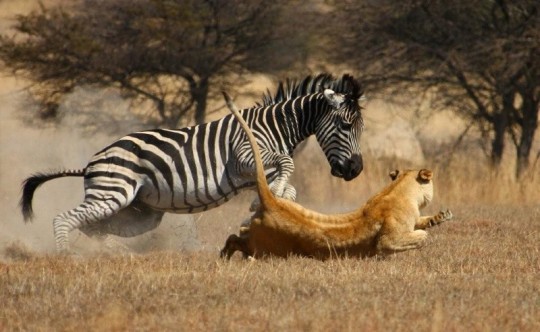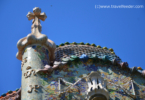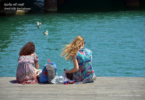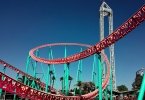Extraordinary wildlife to watch whilst on an African safari
Guest Post
African safaris – there are so many types to choose from: 4WD safaris, canoe safaris, walking safaris, horse-riding safaris even hot air balloon safaris. Each one has its own unique elements and allows you to see some extraordinary wildlife from all sorts of amazing angles. My first experience on safari was in the classic wildlife region of Kenya’s Masai Mara. I had no idea what to expect and was surprised by a number of things such as just how cold it is on an early morning game drive, the fact that game-viewing starts from the minute you enter the park, the strict limits on number of vehicles surrounding a pride of lions or herd of elephants, the close proximity of the animals and the mesmerising scenery of the African plains, which for me was almost as stunning as the wildlife itself.
I might not have spotted all of the famous Big Five that first safari (lion, elephant, leopard, rhino and buffalo), but I did come away with hundreds of photos of hippos, lioness and cubs, elephants, gazelles and zebras amongst many others. Looking back over my photos (in the days of photos rather than digital pics), it is easy to see how you get seduced into taking pictures of anything that moves in those first moments, but as you get more experienced and take further safaris you tend to get slightly jaded at the sight of yet another antelope or giraffe. Plus there is definitely something to be said for just putting the lens down and enjoying the spectacle for what it is. My camera broke once whilst I was on safari and after the inevitable hissing and cursing, I actually had a more enjoyable time, feeling much closer to the wildlife than having a camera come between us.

East Africa is jam-packed with the big names in wildlife reserves – the Masai Mara and Serengeti (split only by man-made borders between Kenya and Tanzania), the extraordinary Ngorongoro Crater, home to over 30,000 animals, Amboseli, with the imposing lines of Mount Kilimanjaro looming up in the distance and the more remote (but thus less crowded) Ruaha and Selous. However, it was in South Africa that I had my most memorable encounters with wildlife. Fortunate enough to take a walking safari in Timbavati, a private reserve on the edge of the world famous Kruger National Park, we arrived at our (very basic) camp just as a herd of water buffalo wandered through the site. Quite a welcome. We then headed out to the bush with nothing but some water, a camera and of course, a rifle. I soon found myself crouching a mere 20 yards from a herd of elephants. I watched as a mother gently nudged her baby up a steep riverbank as time and time again it stumbled and fell back down. The guide I was with impressed on me the importance of not spending too much time with one group of animals – “they allows us into their space” he explained “so it is important not to overstay our welcome”. Later that afternoon we wandered along a dry riverbed and spotted the evidence that a rhino had been rolling in the mud to try and cool its skin. And lo and behold we rounded a corner and came across the beast itself, munching away at some shrub. I’m not sure who was more surprised, but as the rhino ‘whirled’ around, for a split second I thought we were going to get flattened. Fortunately he raced off in the other direction but it was certainly a heart-stopping moment.
On that same safari I also learned the importance in actually not coming across any wildlife, but to take joy in just being in such a special place. We spent an entire morning trying to spot some big beasts and saw nothing. However, we did come across the most incredible spider’s web I have ever seen (made more spectacular by the early morning dew), an aardvark print, various dung which my guide could almost narrate a diary from – the species it belonged to, its diet, roughly whereabouts it was heading, incredible – and an Oxpecker bird which commonly resides atop a hippo ridding the beast of parasites. All memories which stand out as much as the larger animal encounters I had enjoyed.
Perhaps the most surprising location I have enjoyed watching wildlife in Africa was in the Cape of Good Hope Nature Reserve. Known more for being the location of Cape Point, originally thought to be the spot where the Atlantic met the Indian Ocean, hundreds of tourists drive through this park each day to have their photo taken at the Cape thus missing out on some extraordinary flora and fauna discoveries. Once again I was on foot, trekking from Table Mountain at Cape Town down to the Cape itself along a newly created hiking route and was fortunate enough to spot the very rare Klipspringer along with the Cape Zebra, ostrich, eland and the all too common Baboon. I enjoyed picnic lunches amongst the resplendent Fynbos, endemic to this region and my guide was very proud to point out the King Protea, the National Flower of South Africa. Unfortunately I was not there during the whale season, but I did enjoy several penguin encounters and these being my favourite creatures by far, did make for the perfect wildlife encounter for me.
So from a charging rhino to aardvark prints and cheeky baboons, a safari in Africa can bring you all sorts of extraordinary experiences, and demonstrates that there is nothing like actually getting out there in the animals’ natural habitat. 🙂 – Travel Feeder, the ultimate travel photo blog.
This guest post has been written by Helene Cooper who is a keen globetrotter and has spent much of her life travelling to all seven continents including kayaking past the whales, seals and penguins of Antarctica, trekking amongst wild orang-utans in Borneo and swimming with piranhas in Brazil’s Pantanal region. Helene currently writes for Dragoman.




